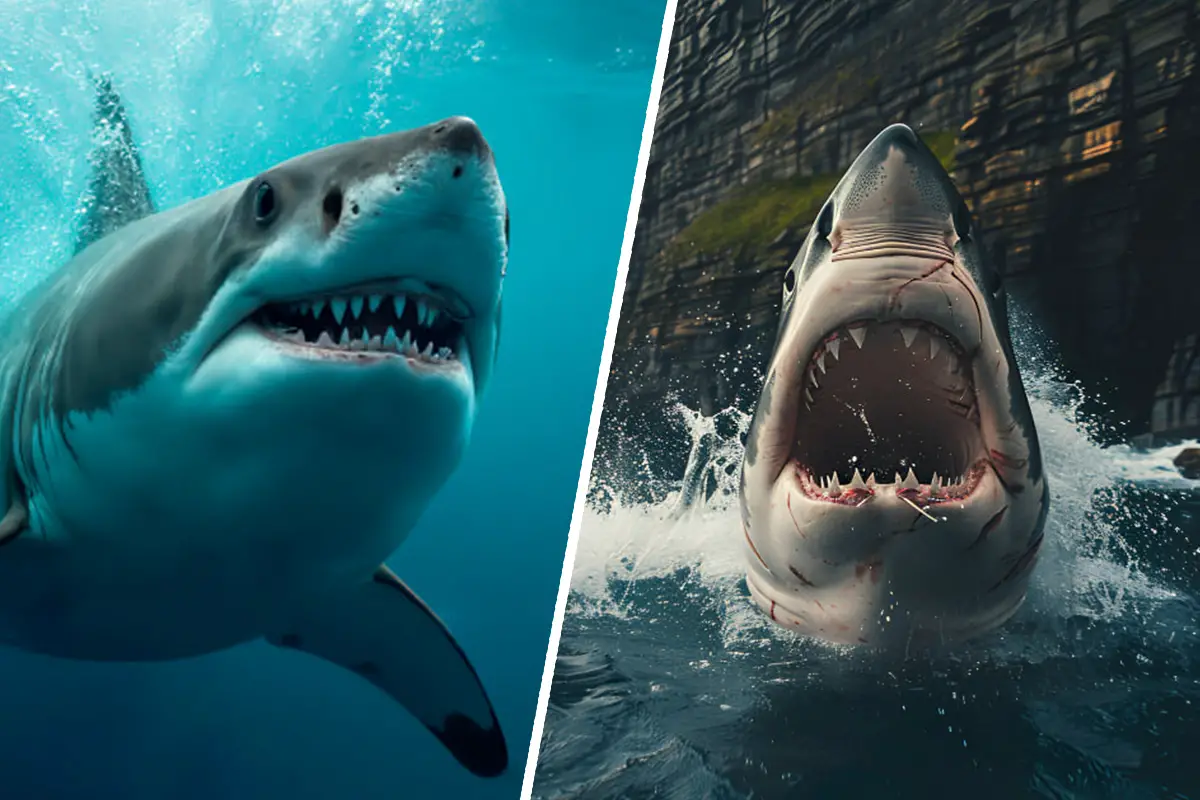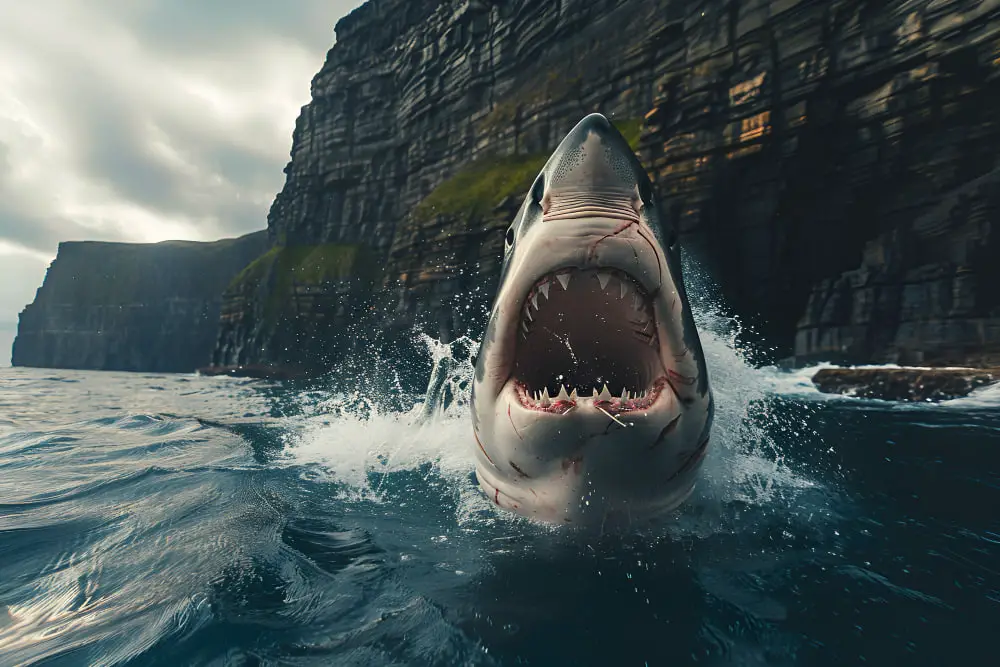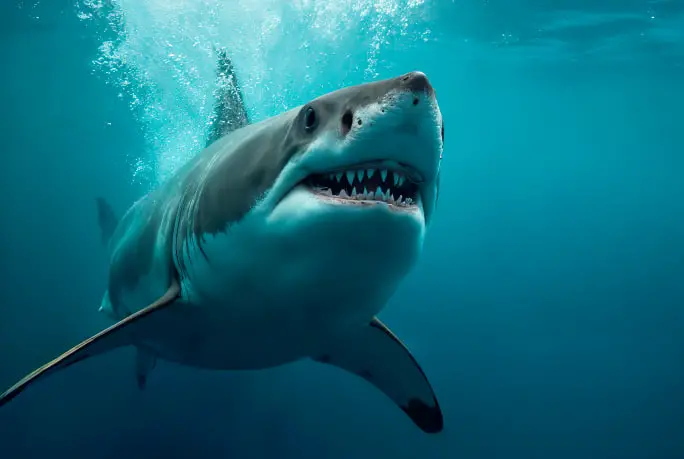Why Great White Sharks Struggle to Survive in Captivity?

Biological Needs and Challenges
Great white sharks are rare in aquariums worldwide due to significant obstacles. Their constant motion requirement is critical for survival, as they extract oxygen from water flowing through their gills as they move. Stopping means death, and placing them in a tank doesn’t provide enough space for necessary airflow.
Their diet presents another issue. Great whites require:
- Seals
- Other sharks
- Sea turtles
This menu is challenging to maintain in typical aquarium kitchens. Captivity often leads to distress for these nomadic creatures, resulting in self-injury from collisions with tank walls.
Artificial environments can disrupt the sharks’ natural electroreceptive abilities, which guide them through oceans. Surrounded by glass walls and noisy filtration systems, they experience sensory overload, confusing their internal navigation and increasing stress.
These challenges highlight that nature designed great whites to roam vast ocean stretches with precision, an intricate dance of biology and environment that’s difficult to replicate behind aquarium glass.
Historical Attempts and Failures

The history of housing great white sharks in captivity is filled with challenges and disappointments. Since the 1970s, aquariums like SeaWorld and Steinhart Aquarium attempted to capture and maintain great whites, but these efforts consistently faced numerous obstacles.
Feeding great whites in captivity proved extremely challenging. These predators often refused artificial food, and their unique hunting instincts didn’t align with regular feeding schedules. Space limitations also posed significant problems, as even extensive tanks restricted the sharks’ natural long-distance journeys.
The sharks’ tendency to collide with tank walls became a well-known issue. Accustomed to open waters, their navigation seemed to malfunction in confined spaces, leading to injuries from repeated impacts with glass barriers. This raised ethical concerns and made it more difficult to keep these predators in human-made habitats.
The most notable experiment occurred at the Monterey Bay Aquarium, which developed an elaborate system to house young sharks, achieving brief success. Their specially designed tank for open ocean animals held:
- 3.78 million liters of water
- 10.6 meters in depth
However, even their extensive tanks ultimately proved inadequate for the sharks’ needs.
These attempts, marked by trial, error, and occasional tragedy, emphasize an important truth: some natural wonders resist human curiosity’s constraints. The great white’s untameable nature suggests that the best way to observe their magnificence remains in their vast, natural oceanic environment.
Technological and Logistical Challenges

Recreating the ocean within an aquarium presents enormous technological and logistical obstacles. The tank itself must match the grandeur of the great white’s natural habitat, requiring dimensions comparable to a football field in length and a multi-story building in depth.
Capturing and transporting these ocean giants is a complex operation that demands:
- Precision
- Specialized equipment
- Deep respect for the animal’s well-being
The process involves creating a less stressful and more survivable journey — a mobile ocean, in essence — to consider transporting these creatures without harming their health.
The financial implications of maintaining such an impressive display are substantial. Aquariums must invest heavily in infrastructure and animal transport, and face ongoing costs to replicate a portion of the great white’s ecosystem. This includes:
- Advanced filtration systems
- Temperature controls
- Saltwater chemistry
- Constant monitoring to maintain ideal conditions
As history has shown, such ambitions teeter between innovation and impracticality. In an era of rapid technological advancement, perhaps the most innovative approach is to recognize that some ocean titans are best appreciated in their natural habitat, embracing the freedom their existence demands.
Ethical Considerations

The ethical issues surrounding the confinement of great white sharks in aquariums are complex and significant. The debate centers on our duty to ensure the well-being of the sentient beings we choose to study and display.
The acknowledgment of stress and physical harm experienced by great white sharks in captivity highlights the ethical missteps in previous attempts to domesticate them for entertainment and educational purposes. This goes beyond lack of space or offering the “right” diet; it’s about fundamentally altering their natural lifestyle, forcing them into an unfamiliar environment that rarely meets their inherent needs.
“It’s a very, very, very resource intensive program, and we felt like we had accomplished our goal of introducing the general public to a live white shark,” said John Hoech, director of husbandry operations at Monterey Bay Aquarium.
Aquariums have an ethical obligation to prioritize animal welfare over the appeal of a unique spectacle. While showcasing these animals as educational exhibits can promote awareness and appreciation, it’s crucial to carefully balance this against the stress they endure in captivity.
Modern aquariums must consistently prioritize practices that respect the intrinsic value and dignity of the life they exhibit. Promoting alternative approaches, such as advanced interactive displays, virtual reality experiences, and support for conservation efforts, can guide society to a more ethical appreciation for these apex predators without restricting them to an unsuitable lifestyle.
As caretakers of this planet, we are responsible for preserving the dignity and freedom of these remarkable creatures. Embracing this role means recognizing the limits of our curiosity and reconsidering how we value and protect our oceans’ marvels.
Current Alternatives and Future Prospects

With traditional aquariums not suitable for observing great white sharks up close, we consider current alternatives and future possibilities. Cage diving offers a thrilling compromise, allowing enthusiasts to observe these apex predators in their natural habitat while protected by a specially designed cage.
For those preferring to stay on land, virtual reality (VR) technology provides an exciting frontier. VR experiences offer a profound glimpse into a great white shark’s life, complete with the sensation of swimming alongside these creatures in the vast ocean. Improvements in VR technology continue to enhance the realism of these encounters, offering detailed and immersive content that captivates the imagination while maintaining ethical standards.
Looking to the future, there’s optimism driving the exploration of new methods and technologies that might alleviate the challenges of caring for great whites in captivity. Innovations in ecology-sensitive design, such as tanks that better replicate the expansive and dynamic habitats of these sharks, could theoretically provide more suitable environments.
Research on reducing sensory overload and stress within enclosures could also lead to significant breakthroughs. Understanding the intricacies of a great white’s electroreceptive abilities and spatiotemporal needs might eventually enable the design of habitats that don’t inadvertently disrupt their systems.
As aquariums aim to educate and inspire without compromising their ethical responsibilities, exploring these alternatives contributes to a growing range of options that allow people to connect with one of nature’s most extraordinary creatures. The goal is to foster both curiosity and conservation, creating a shared future that respects and values these majestic inhabitants of the deep blue sea.
In reflecting on the challenges and ethical considerations of housing great white sharks in captivity, one central truth emerges: these majestic creatures are best admired in their natural oceanic expanse. The journey of understanding their needs and respecting their freedom reminds us of the delicate balance between human curiosity and the preservation of nature’s wonders.
REFERENCES
